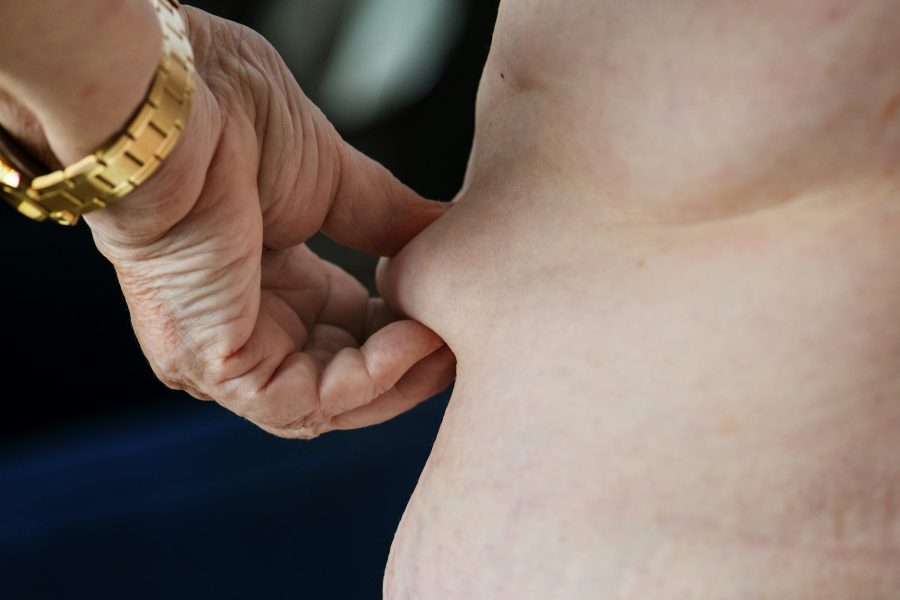Human aggression, a behavior aimed at causing harm, has roots in both biology and environmental influences, with research highlighting genetic factors and cultural and situational learning in its development.

Is human aggression an instinct or something which we learn?
Theories concerning the origin of human aggression are all rooted in the long-standing debate of nature versus nurture. While some regarded aggression as a biological and innate phenomenon, others held it to be a pliable behaviour learnt through environmental observations and situational factors. Human aggression is defined as any behaviour that is intently aimed to cause harm to another individual, given that the offender is conscious of the action and the target motivated to avoid the behaviour (Anderson & Bashman 2002). There have been many studies supporting both nativist and empiricist views of human aggression; recent genetic studies have provided compelling evidence for biological influences on aggression, yet reports analysing the effect of cultural, social and situational influences, greatly support the notion that aggression is largely a learnt behaviour.
Konrad Lorenz (1950) was one of the best-known proponents of aggressive instinct in humans. He described aggression as an innate and heritable trait that is valuable throughout the course of evolution to both humans and animals, allowing the survival of the strongest species. Lorenz discards the concept of aggression as a learned behaviour based on observations from the environment. In his devised hydraulic model of instinct, Lorenz (1950), imagines a spontaneous build up of instinctive pressures that eventually will seek release as a result of a sign stimulus (trigger) that changes depending on the amount of pressure built up. Following the discharge of this pressure (in form of aggression), the organism tends to be less aggressive, pending another cycle of energy accumulation.
aggression is an innate and heritable trait that is valuable throughout evolution to both humans and animals, allowing the survival of the strongest species.
Konrad Lorenz
The main criticism of Lorenz’s instinct theory comes from the fact that the majority of his work was based on observations originating from animal behaviour. Berkowitz (1973) argues with the gross analogy drawn between human and animal behaviour in Lorenz’s instinct theory, and claims, ‘For Lorenz, man is remarkably similar to the Greylag goose’. Human’s development of aggressive technology has lead to far more complex interactions at times of violence, compared to simple acts of aggression such as ritualization and appeasement rituals often seen in animals (Lorenz, 1950). Hence rendering the contingency of the observed behaviour in animals less applicable to the human condition.
It is essential to determine the extent to which a particular behaviour can be labelled as an instinct. Aggression is a universal and pervasive response in humans, but so is walking (Buss, 1961). However, walking is not considered an instinct; by the time a child starts to show aggressive behaviour they have learned many other behaviours, whereby many of them are not instinctual. This implies that the ubiquity and prevalent of a specific behaviour is not a sustainable reason for considering it as an instinct.
Konrad Lorenz’s (1966) refined evolutionary perspective on human aggression, suggested that strong inhibitory mechanisms have coevolved to allow humans to suppress their aggression when needed. It is plausible to assume that humans are instinctually inclined to fulfil their basic needs, but they may not have an innate tendency to fulfil these needs though aggressive behaviour.
Studies have repeatedly shown that there is a statistically significant correlation between gender and aggression, suggesting that males are more likely to exhibit aggressive behaviour than females (Maccoby & Jacklin. 1980). However, the environment in which individuals are brought up in is a key determinant in aggressive behaviour (Geen, 2001). Young males are often encouraged to be active and dominant members of a competition oriented economic system, exhibiting “masculinity” and dominance; whereas females are refrained from aggressive behaviour, with fighting being a taboo, they try to preserve their “femininity” (Geen, 2001). This is often the conventional explanation supporting the non-innate view on gender difference in aggression; nonetheless, the distinction in physical ability between males and females and the possible implication that this may have had on aggression from an evolutionary perspective, is ought to be considered.
Hostile vs. Instrumental Aggression
Human aggression is divided into two broad categories of hostile and instrumental aggression. Hostile aggression is an immediate impulse driven response, based on situational provocations, closer to the type of aggression recognised by instinct theories. However, instrumental aggression is a calculated and learned form of aggression where extreme emotional arousal is usually absent at the time of the offence where aggression is the means to another goal, and not simply an impulse driven reaction to harm an individual. This type of aggression is more difficult to explain using instinctual theories of aggression.
The amygdala and specific regions of the prefrontal cortex are held to be prime regulators in behavioural models such as defence and aggression. Dysfunctions in these neural circuits and the consequent display of imbalances in emotional outcomes, represents an etiological factor for aggression. High reactivity in the amygdala, together with dampened levels of activity in the prefrontal cortex, increases the likelihood of aggressive behaviour (Decoster et al. 1996). Neuromodulatory and hormonal defects appear to modify the propensity towards aggression, feasibly due to the imbalances they cause in these neural circuits.
In a study analysing the effects of anabolic steroids such as testosterone on aggression, it was discovered that mice with high levels of administered testosterone, show more aggressive behaviour (Breuer et al. 2001). However, in humans the link between testosterone and aggression is less clear. Boys show a positive correlation between high levels of testosterone and social aggression, yet girls do not show such associations (Sanchez-Martin et al. 2000). Nevertheless, it has been recorded that women who display acts of competitive aggression have higher levels of testosterone (Cashdan, 2003). This implies that testosterone levels may unconditionally affect aggression in both sexes, albeit the mode of aggression may be moulded based on the psychosocial or environmental factors affecting that individual (Cashdan, 2003).
Hormones & Aggression
The relationship between hormone activity and aggression may be to an extent a reciprocal one. This idea is party de to the finding that testosterone levels in males also tend to increase after a violent or aggressive behaviour, despite a low level before the conflict (Sanchez-Martin et al. 2000). Serotonin is also linked to aggression; PET scans of patients with pathological aggression display reduce levels of serotonin in their anterior cingulate cortex (Frankle et al. 2005).
Although it is unlikely that a specific gene or hormone is able to singlehandedly determine behaviour, but gene-environment interactions have been documented to greatly influence behaviour (Breuer et al. 2001). It has been discovered that testosterone and cortisol (a glucocorticoid hormone implicated in stress) interactions are essential to establish a link between levels of testosterone and aggression both in males and females; such that individuals with high testosterone levels only positively correlated with increased aggression, if they have low levels of cortisol (Mehta & Joseph, 2010).
In a remarkable longitudinal study by Caspi et al. (2002), it was demonstrated that the expression level of the gene responsible for encoding the enzyme Monoamine oxidase A (MAOA), could act to moderate the effects of childhood maltreatment which commonly manifests into aggressive and anti social behaviours in adulthood. Individuals with severe maltreatment and low MAOA activity showed greater disposition towards violence as opposed to those with severe maltreatment but high MAOA activity. MAOA enzyme is responsible for degrading serotonin, dopamine and noradrenaline (Shih et al. 1999) but the mediating neural and psychological mechanisms involved in aggression are yet to be elucidated.
Aggression & social observations
Most psychologists accept the role of biological factors in aggression to some degree; however, the general consensus amongst them supports a behavioural approach for explaining the origin of human aggression; with this perspective, aggression is viewed not simply as an innate drive but as a response to external stimuli (Geen, 2001).
Albert Bandura’s social learning theory (1965; 1973), suggests that people acquire complex behaviours as the consequence of social observations, and it is the consequent reinforcement of these observed behaviours, in a fashion similar to the learning of any new behaviour, that controls the learning of aggression; these reinforcements are usually in form of incentives and approvals directed towards the person displaying acts of aggression. In the famous Bobo doll experiments Bandura (1961) showed that children imitate aggressive behaviour through observing adults actions or watching aggressive behaviour through media. Through such exposures children may come to believe that aggression is an acceptable and even a righteous way towards a goal, as often portrayed by hero figures in the media (Geen, 2001)
However, the novelty of the Bobo doll experiments may have compromised the credibility of banduras results. In a follow up study, it was demonstrated that the children who were previously exposed to the doll showed less aggression towards the doll than those who were new to it (Cumberbatch, 1997). Proposing that aggression is not entirely an act of imitation, where judgmental factors and incentives may provide the decision as to whether one engages in aggression or not. Additionally, the extent to which a behaviour directed towards a doll is applicable to the human condition is subject to debate.
Aggressive behaviours observed in Bobo doll experiments fail to concord with Anderson & Bushman’s (2002) theory of human aggression, in which the target that the aggression is aimed at is motivated to avoid the aggressive behaviour, which in this case the doll is clearly unable to. It is likely that children will react differently if instead of a doll they are exposed to a live subject. Furthermore in these experiments children may have simply been motivated to imitate the adult, in the belief that the actor’s behaviour towards the Bobo doll was an instruction that they had to follow, wanting to please the adults, (Fergusen, 2010).
Effect of violent media on aggressive behaviour
Although studies heavily support the effect of violent media on aggressive behaviour, particularly in children (Geen, 2001), yet social learning theory fails to explain why some individuals show continuous aggression without being continuously exposed to violent media, if aggressive behaviour is largely an act of imitation. And yet there remains the simple nonetheless fundamental question that if all acts of aggression are mere imitations, how did the first act of aggression ever occur.
Prior to Bandura’s theory of social learning (1965; 1973), the frustration aggression hypothesis by Dollard et al. (1939) was the first attempt at a systematic explanation of human aggression. Dollard et al. (1939) suggested that frustration always leads to aggression; Although the definition of frustration is all too susceptible to radically different meanings, but this frustration arises when an individual perceives the route to a goal obscured, however, this reverses once the goal appears to be attainable again.
In a revised version of the frustration aggression theory, termed aggressive cue theory, Leonard Berkowitz (1966) proposed that anger is a consequence of frustration, and it is this anger that initiates aggression in the presence of certain external triggers. These external triggers are environmental stimuli linked to the aggressive behaviour or the subject of frustration. Nevertheless, frustration or anger is not always a direct cause of aggression; It is logical to assume that frustration leads to general emotional arousal and that theories such as Bandura’s social learning, can explain and determine a persons reaction to this arousal (Seligman, 1975).
Following the aggressive cue theory, Berkowitz (1966) showed that the presence of certain cues such as a weapon in the environment could elicit aggressive behaviours. His findings have been replicates across many countries with similar results. However, some inconsistencies have been seen in instances where participants were made aware of the expectations of the experimenter, often showing less aggression; this instance is an example whereby environmental triggers may be promoters of aggressive behaviour but an individual’s situational consideration withholds them from pursuing the violent behaviour.
The influence that the external environment has on behaviour is clearly seen in group-aggression. Often individuals who are believed to be non-aggressive may behave aggressively once they become part of a group (Geen, 2001). Deindividuation allows individuals to loose their singular identity, merge into a group and feel less responsible for their actions as an individual. In a study analysing the effect of deindividuation, Zimbardo (1969) showed that a deindividuated person acts less leniently towards the test subjects than an individuated person, regardless of how the recipient was described, an honest or a devious person.
The level of aggressive behaviour is shown to be culturally variable based on evidence from empirical cross-cultural research. Bowdle et al. (1996) showed that in the American culture, the southern population were more prone to initiate conflict and show aggression when provoked, as opposed to people from northern states. This suggests that social acceptability of aggression is based on ones belief, shaped on the established paradigms within than society, which can be changed through exposure to different norms, reinforcing the idea that the rearing environment is heavily influential on behaviour.
Conclusion
Throughout the twentieth century the pendulum swung between instinct or environment as the more important factor in determining human aggression. Aggression cannot be credited to just one origin; both nature and nurture are essential in understanding the causes of individual aggressive and violent behaviour. Although aggression most likely evolved as a strategy in many species, whether or not it is expressed depends on previous social experiences, as well as the specific social context in which the individual finds him/herself. There are also important individual differences in the propensity for aggression, depending on both genetic and environmental factors, as well as their interaction; hence in pursuit of understanding the foundations of human aggression and violence, it is essential to consider the role of both biological and situational factors
References
- Anderson, C. A., & Bushman, B. J. (2002). Human Aggression. Annual Review of Psychology, 53(1), 27–51.
- Bandura, A. (1965) Influence of models’ reinforcement contingencies on the acquisition of imitative responses. Journal of Personality and Social Psychology. 1, 589-595.
- Bandura, A., Ross, D., & Ross, (1983) S. A. Transmission of aggression through imitation of aggressive models. Journal of Abnormal and Social Psychology, 63, 575-582.
- Berkowitz, L. (1966). Aggression: A Social Psychological Analysis. New York. McGraw-Hill Book Company.
- Berkowitz, L. (1967). Weapons as aggression-eliciting stimuli. Journal of Personality and Social Psychology, 7(2) 202-207.
- Berkowitz, L. (1973). ‘Simple Views of Aggression’ In Montagu, A. (ed.) Man and Aggression. Second Edition. New York. Oxford University Press. Pp. 39-52.
- Bowdle, Brian F.; Cohen, Dov; Nisbett, Richerd E.; Schwarz, Norbert (1996). “Insult, Aggression, and the Southern Culture of Honor: an “Experimental”. Journal of Personality and Social Psychology 70: 945–960
- Breuer, M.E., McGinnis, M.Y., Lumia, A.R., & Possidente, B.P. (2001). Aggression in Male Rats Receiving Anabolic Androgenic Steroids: Effects of Social and Environmental Provocation. Hormones and behavior, 40(3), 409–418.
- Buss, A. (1961). The Psychology of Aggression. New York. John Wiley & Sons, Inc.
- Cashdan, E. (2003). Hormones and competitive aggression in women. Aggressive Behavior, 29(2), 107–115
- Caspi, A., & Moffitt, T. E. (2006). Gene–environment interactions in psychiatry: joining forces with neuroscience. Nature Reviews Neuroscience, 7(7), 583–590.
- Christopher J. Ferguson (2010). Blazing Angels or Resident Evil? Can Violent Video Games Be a Force for Good? Review of General Psychology, 14, 68-81
- Cumberbatch, G (1997). “Is television harmful?”, in Cochrane, R and Carroll, D (1997) Psychology and social issues, London: Falmer (pp. 171-181)
- Decoster, M.; Herbert, M.; Meyerhoff, J.L.; Potegal, M. (1996). Brief, High-Frequency Stimulation of the Corticomedial Amygdala Induces a Delayed and Prolonged Increase of Aggressiveness in Male Golden Hamsters. Behavioral Neuroscience 110 (2): 401–412
- Dollard, J., Doob, L. W., Miller, N. E., Mowrer, O. H., & Sears, R. R. Frustration and aggression. New Haven, Conn: Yale University Press, 1939
- Ferguson, C. J., & Kilburn, J. (2010). Much ado about nothing: The misestimating and over interpretation of violent video game effects in Eastern and Western nations: Comment on Anderson et al. (2010) Psychological Bulletin, 136(2), 174–178
- Frankle, W. G., Narendran, R., Huang, Y., Hwang, D. -R., Lombardo, I., Cangiano, C., Gil, R., et al. (2005). Serotonin transporter availability in patients with schizophrenia: a positron emission tomography imaging study with [11C] DASB Biological psychiatry, 57(12), 1510–1516.
- Kaufmann, H. (1970). Aggression and Altruism – A Psychological Analysis. New York. Holt, Rinehart and Winston, Inc.
- Konrad Lorenz, 1966. On Aggression (Harvest Book, Hb 291). 1 Edition. Mariner Books.
- Lorenz, K. 1950. The comparative method of studying innate behavioural patterns. Sym. Soc. Exp. Biol. 4:221-268.
- Maccoby, E. E., & Jacklin, C. N. (1980). Sex differences in aggression: a rejoinder and reprise. Child development, 51(4), 964–980.
- Mehta, P. H., & Josephs, R. A. (2010). Testosterone and cortisol jointly regulate dominance: evidence for a dual-hormone hypothesis. Hormones and Behavior, 58(5), 898–906.
- Russell G. Geen, 2001. Human Aggression (Mapping Social Psychology). 2nd Edition. Open University Press
- Sánchez-Martı́n, J. R., Fano, E., Ahedo, L., Cardas, J., Brain, P. F., & Azpı́roz, A. (2000). Relating testosterone levels and free play social behavior in male and female preschool children. Psychoneuroendocrinology, 25(8), 773–783.
- Shih J.C. Shih, K. Chen and M.J. Ridd (1999) Monoamine oxidase: From genes to behavior. Annu Rev Neurosci, 22, 197–217
- Soma, KK; Scotti, MA; Newman, AE; Charlier, TD; Demas, GE (2008). Novel mechanisms for neuroendocrine regulation of aggression. Frontiers in neuroendocrinology 29(4):476–89.
- Zimbardo, P. G. (1969). The human choice: Individuation, reason, and order vs. Deindividuation, impulse and chaos. In W. J. Arnold & D. Levine (Eds.), Nebraska symposium on motivation 17: 237–307. Lincoln, NE: University of Nebraska Press.


Leave a Comment